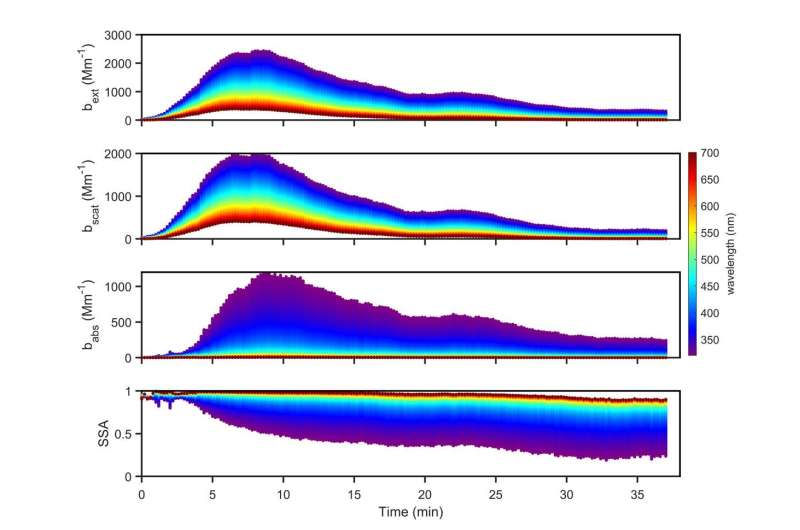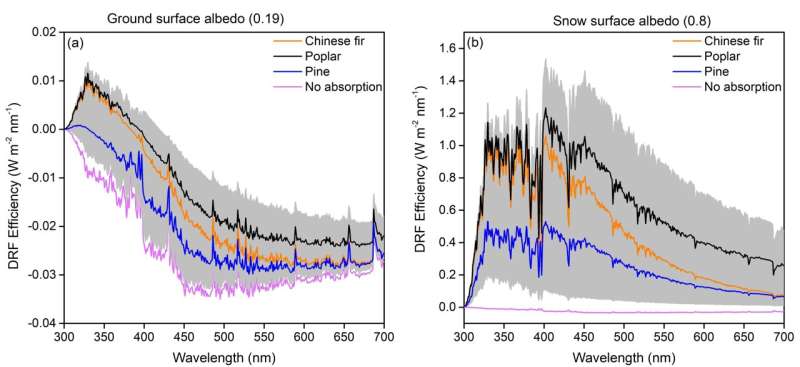This article has been reviewed according to Science X's editorial process and policies. Editors have highlighted the following attributes while ensuring the content's credibility:
fact-checked
peer-reviewed publication
trusted source
proofread
New study highlights importance of brown carbon in global climate change

Researchers led by Prof. Zhang Weijun from the Hefei Institutes of Physical Science (HFIPS) of the Chinese Academy of Sciences (CAS) have found that a decrease of about 35% of single scattering albedo (SSA) at 365–405 nm would cause a 46% decrease in direct radiative forcing (DRF) efficiency at ground albedo. The research was published in Science of the Total Environment.
Brown carbon (BrC) is an important light-absorbing carbonaceous aerosol that is very good at absorbing near-ultraviolet and visible radiation. Its ability to absorb radiation depends on the wavelength, which has a major impact on the local and global radiation budget. BrC mist is formed when BrC is released into the air and then oxidized again. Biomass combustion is a major source of the main BrC in the air. The spectral properties of BrC from burning biomass are uncertain due to the limitations in measurement methods, leading to large uncertainties in the assessment of BrC radiative forcing.
In this study, the researchers used a four-wavelength broadband cavity-enhanced albedometer that they had developed. The albedometer was operated at four independent wavelengths: 365, 405, 532, and 660 nm.
The albedometer can be used to measure the extinction coefficient, scattering coefficient, absorption coefficient, and SSA of BrC emitted from wood pyrolysis. These optical parameters obtained online can effectively reflect the changes in aerosol during biomass pyrolysis.

"Based on the above multi-wavelength in-situ measurement, we developed the SSA spectrum retrieval method, and we obtained the broad spectral characteristics of the primary BrC in the range of 300–700 nm with it," said Zhou Jiacheng, who invented the albedometer
The SSA spectrum can be used to evaluate the DRF of primary BrC. The DRF efficiency over the ground of various primary BrC emissions increased from 5.3% to 68% as compared to the assumption of non-absorbing organic aerosol assumption.
This study highlights the importance of BrC spectral properties in radiative forcing assessment, which has important scientific implications for accurate assessment of aerosol climate impacts.
More information: Qianqian Liu et al, Broadband spectrum characteristics and radiative effects of primary brown carbon from wood pyrolysis, Science of The Total Environment (2023). DOI: 10.1016/j.scitotenv.2023.163500
Journal information: Science of the Total Environment
Provided by Chinese Academy of Sciences





















